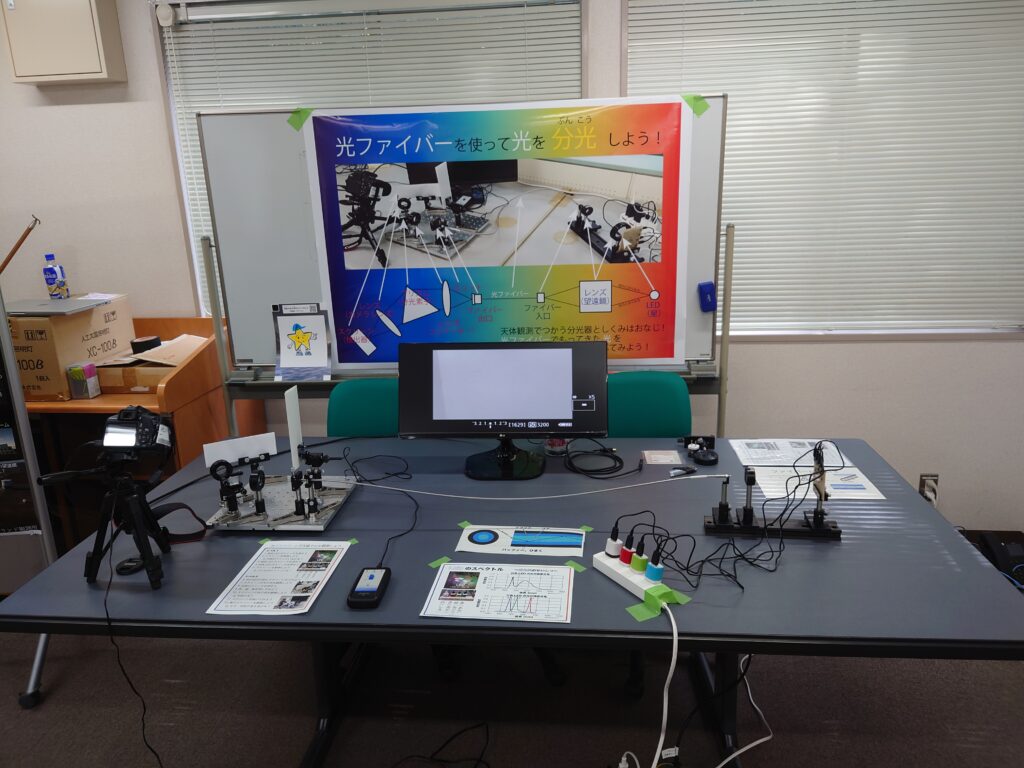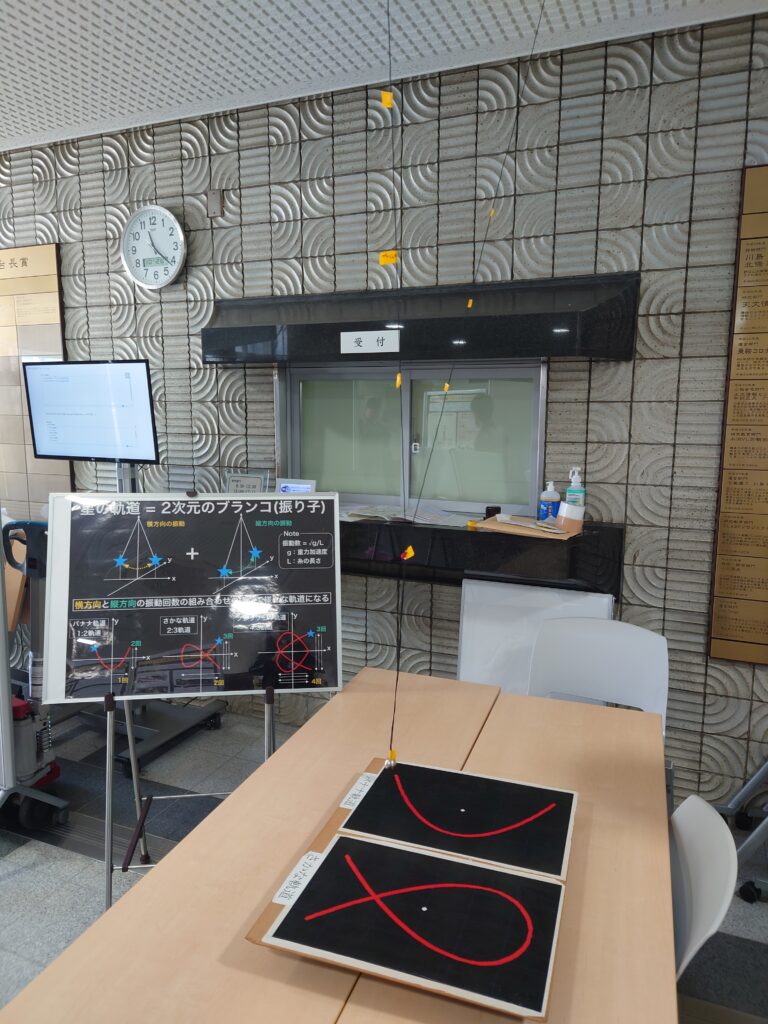NAOJ Open Day 2023
Captain’s log, Star Date 60245.5. Today represents a pivotal juncture in our celestial pursuits—the opening day (三鷹星・宇宙の日) of the National Astronomical Observatory of Japan (NAOJ). Today’s Open Day serves as a triumphant return after the COVID-19 pandemic, albeit with necessary reservations for entry. Every department in NAOJ give their exhibitions of their research and achievement.
My institute, the Astrobiology Center, gives a series of exhibitions of exoplanet and astrobiology research: firstly there is an operational spectrometer, demonstrating how light can pass through a fibre and be dissected into its constituent wavelengths via a prism. This simple yet powerful device offers visitors an intuitive understanding of how we analyze stellar and planetary atmospheres.

We also showcase a camera setup observing both real and artificial plants. This exhibit visually captures the “red-edge” of chlorophyll, an important signal for life that astrobiologists search for on exoplanets.

Adding an interactive twist, we’ve included a crossword game to engage the audience, each clue rooted in astrobiology and related disciplines.
Situated next to our exhibition is the VLBI team, who recently released groundbreaking result on the black hole at the heart of M87. 22-year observational data has revealed its jet motion, implicating that the black hole rotates! Given their prior financial difficulties, this discovery could potentially secure future funding for the team.
Adjacent to the VLBI setup is the RISE team, showcasing their collaborative work with the European Space Agency on the JUpiter ICy Moons Explorer (JUICE). This year marks its launch, aiming to probe Jupiter’s moons. They also feature an exciting glimpse into an upcoming mission to Mars’ moons: the Martian Moons eXploration (MMX).
Another exhibit that piqued my interest was that of the JASMINE team. The focal point was an unusual pendulum, a representation of how stars near the galactic center may oscillate due to complex gravitational fields. JASMINE hopes to observe these oscillations, revealing new facets of our galaxy.

As this momentous Open Day draws to a close, it’s clear that we’re not just opening doors; we’re unveiling new universes of thought. The synergy of diverse research teams under one celestial dome not only enriches our understanding but propels us into a future teeming with possibilities, and that the final frontier might just be closer than we think.
Yanagi out.